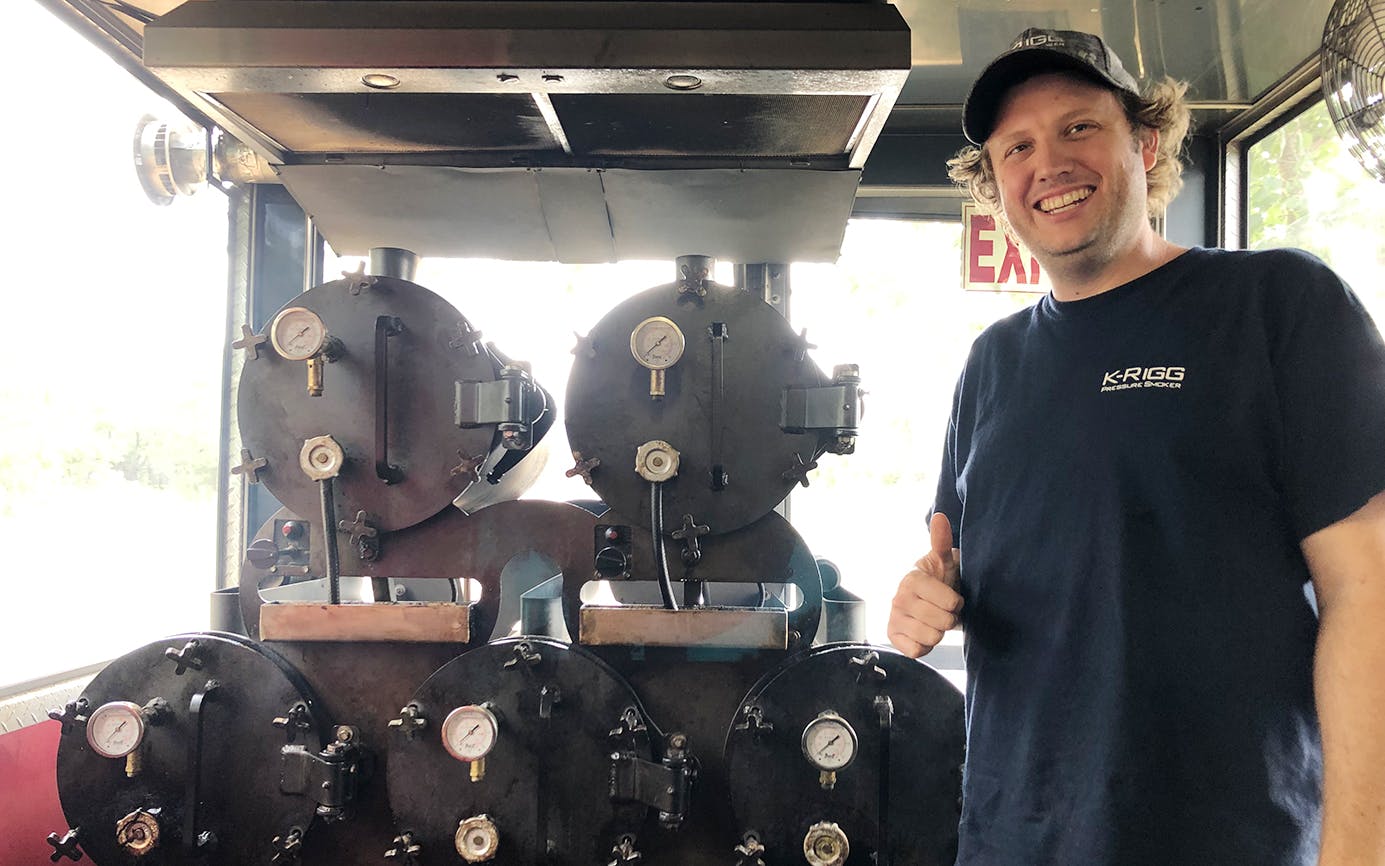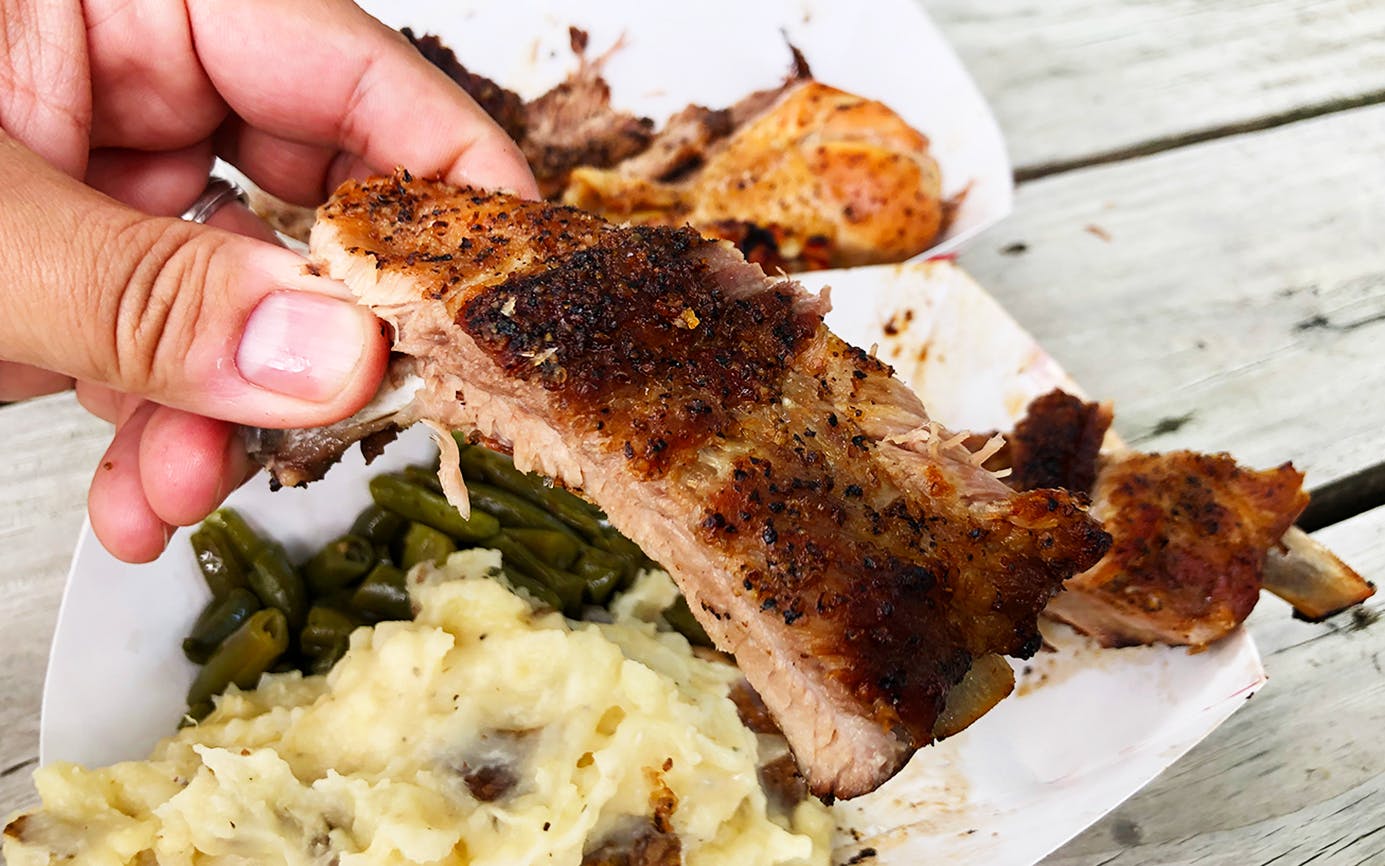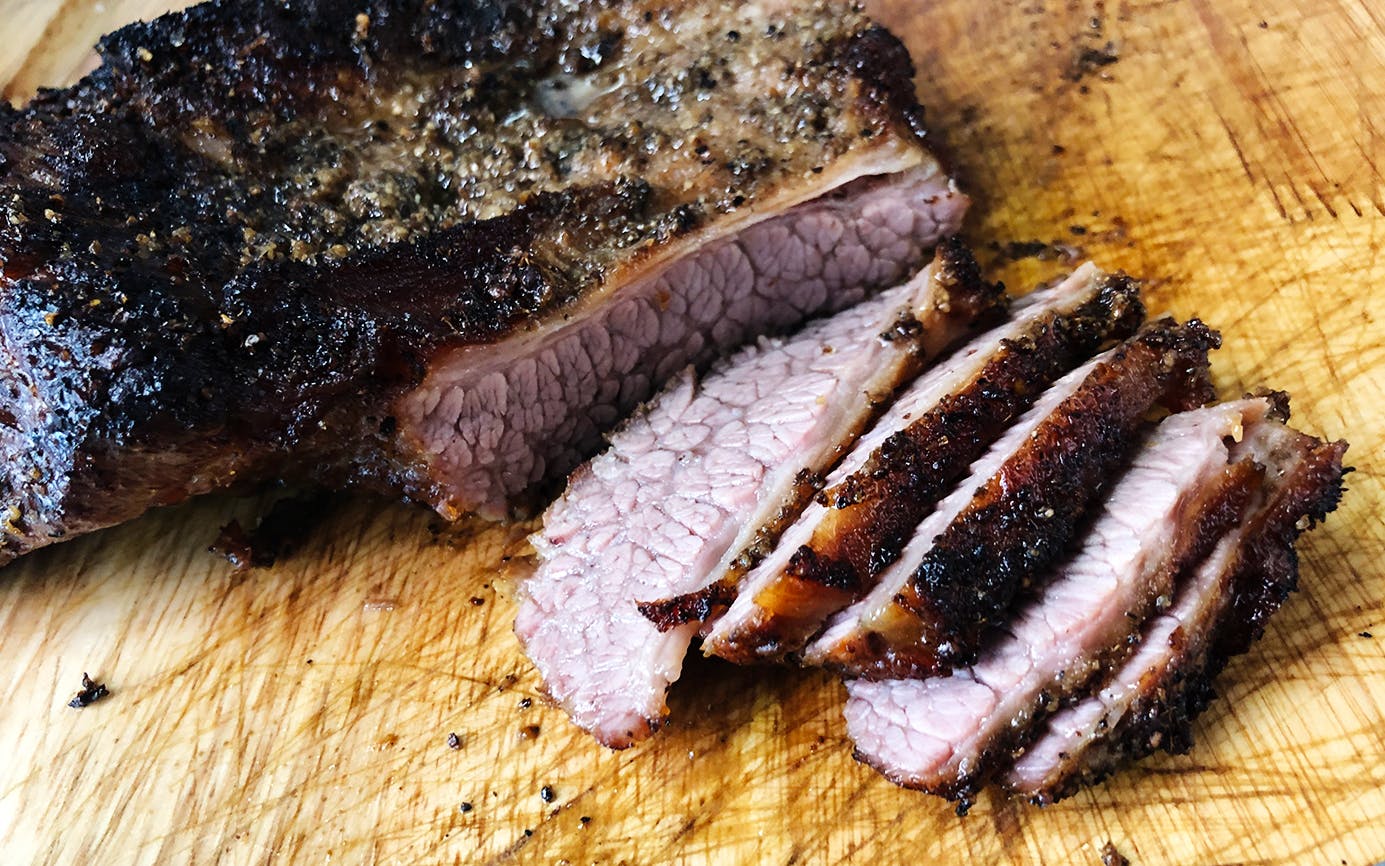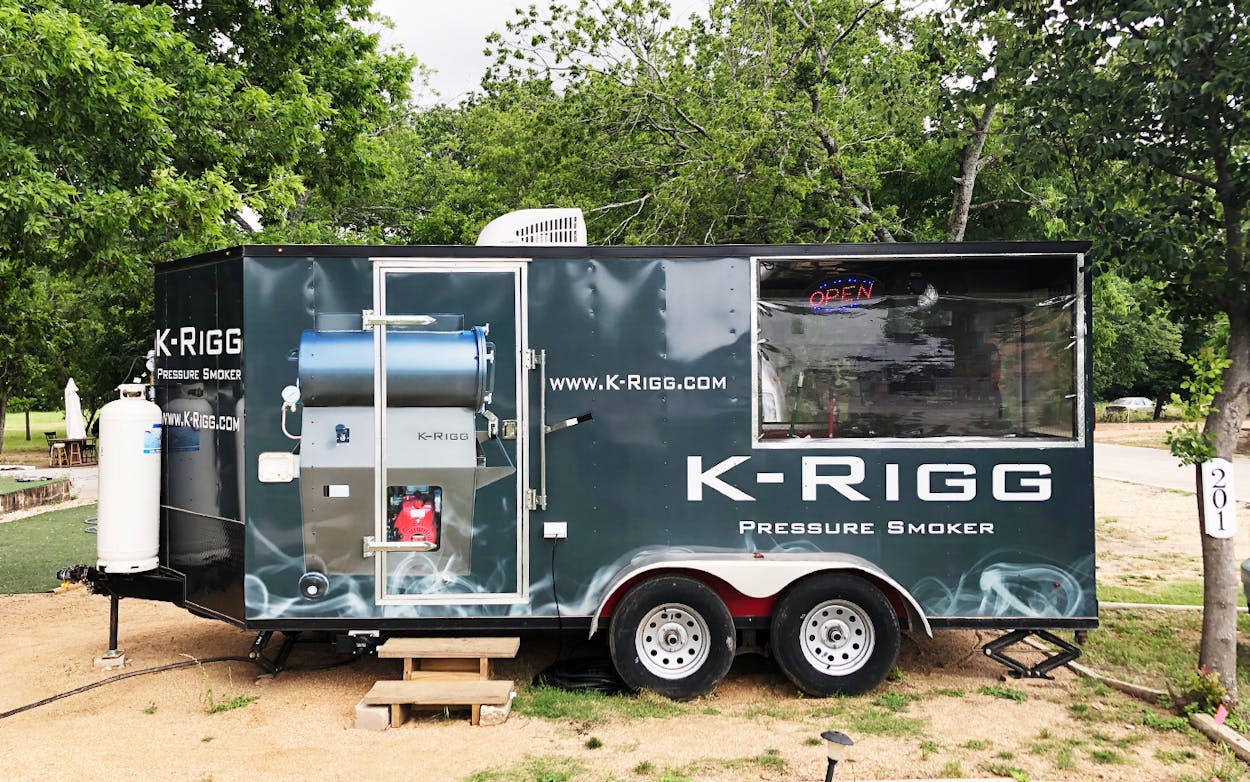When Kyle Riggen started designing his K-Rigg Pressure Smoker in 2017, he’d never built a smoker of any sort and had little experience cooking barbecue. He had, however, run out of patience with his electric smoker and its four-hour cook time for chicken wings. It was hardly the first time a cook wondered how he could speed up the process of smoking meat, but Riggen might have been the first guy allergic to wood smoke to try solving the problem.
Pressure cooking at home is usually done on a stovetop with a specially designed pot. These are commonly used for chili, stews, stocks, and other dishes that contain a lot of water. Cooking under pressure allows water’s heat level to rise above its unpressurized boiling point (212 degrees Fahrenheit) to somewhere around 250 degrees without vaporizing. Riggen started his experimentation on the stovetop by pressure cooking meat and then smoking it to finish, or vice versa. The problem with that method was that it yielded gray meat that didn’t taste like smoke or barbecue. So instead he got to work in his welding shop.

Riggen debuted his first K-Rigg Pressure Smoker a year ago. The pressure is built using a small, propane-fueled engine. There’s a pull starter at the bottom, like you’d find on a lawnmower. The engine’s exhaust, which goes through a catalytic converter, is what pressurizes the system. Riggen considered the easier option of adding pressure via an air compressor, but he didn’t want to add oxygen into the super-hot cooking chamber. If his design seems unsafe, he has three fail-safes built into the system. The pressure inside the cooking chamber hovers around 7.5 psi. If it rises to 10 psi, the excess pressure is released through a primary valve or the back-up valve, and if the pressure rises to 15 psi, the motor cuts off.
The cooking chamber is a simple steel tube. A larger tube surrounds it, and a gas burner sits between the tubes. The smoke comes from wood chips sprinkled on the bottom of the cooking chamber. The steel tube gets hot enough from the burner below to ignite the wood. Riggen cooks his barbecue at around 450 degrees, explaining that it’s “because you’re now under pressure, the boiling temperature of the water, which is inside your meat, is increased drastically.” A rack of ribs is done in thirty minutes, and a ten-pound brisket takes just two hours. But is it any good?
The K-Rigg barbecue trailer opened late last year in Leander, northwest of Austin. Its primary purpose was to advertise the smoker and let potential customers taste the barbecue it can produce. I visited a couple months back. The pit room, with all its gauges and bolts and pipes, is like some steampunk pitmaster’s dream. Riggen was running five smoking chambers, all controlled independently. Hickory chips provided the smoke flavor because he suffers from an allergic reaction to oak, pecan, and mesquite smoke.

Riggen had arrived at 8 a.m. to cook the day’s menu before the 11 a.m. opening, hours that would make any pitmaster jealous. Chicken, ribs, and brisket were the meats on offer, and I tried them all. The chicken was excellent, with juicy, tender meat and crisp skin. I also enjoyed the simply seasoned baby back ribs. They both had the flavor of direct-heat barbecue with some crunchy edges from the high temperatures.
The brisket was another matter. The collagen just doesn’t have time to convert to gelatin in the short cooking time, and so much water is removed during the pressure smoking that the slices dry out immediately after serving. Riggen and I had a frank conversation during the meal, and I urged him to find another beef cut or change the way he was doing briskets if he wanted the final product to reflect well on his smoker. Customers were few, and he was melancholy about the business. “I’m trying this until I run out of money, and I’m getting close to it,” he told me.
Riggen closed the trailer in June, although he still uses it for events. He dropped the price of the K-Rigg Pressure Smoker from $4,000 to $3,000 and started advertising another line of smokers. They’re traditional offsets built from propane tanks, much like a bunch of other pit welding operations use. The lid runs on a track with bearings, so the opening mechanism is much slicker than the usual hinges. He calls it the Boring Smoker. The tag line is “For the times you want to be bored for hours on end.” This was coming from a guy who told me the motivation behind all of his projects comes down to, “Life is too boring to do normal stuff.”

Two months after my first visit, and after the trailer was closed, I got a message from Riggen. He was excited. He’d made a breakthrough of sorts by exploring the use of aluminum instead of steel in his pressure smoker. He released a video a week later showing the new model. He calls it the K-Rigg Rev. The technology and operation of the smoker is the same, but the new model weighs one hundred pounds instead of five hundred pounds like the original, making it easier to ship.
Riggen’s new design uses a pre-manufactured pressure cooker for the cooking chamber, cutting down on cost. It’s just $1,500, which is a big improvement from the earlier model. It’s also easier to open and close, with quick-release knobs instead of bolts. The chamber is much larger in girth, but it’s only fourteen inches deep. Riggen says a rack of ribs fits perfectly, but it can handle only small briskets. He smoked a seven-pound brisket in ninety minutes during the first test run.
The K-Rigg Rev is now for sale. Just like the original K-Rigg Pressure Smoker and the Boring Smoker, Riggen builds them himself in his welding shop in Leander. He has sold about forty of the first model and is hoping for even more of the new Rev model. “I just need to get it in the hands of people,” he told me. Several months back, during our first conversation, Riggen admitted, “I never had a passion for barbecue before this.” I told him building smokers seemed like a strange passion for someone not obsessed with barbecue. He said, and I cannot be sure whether the pun was intentional, “It might be a pipe dream, and it probably is.”
- More About:
- Business








